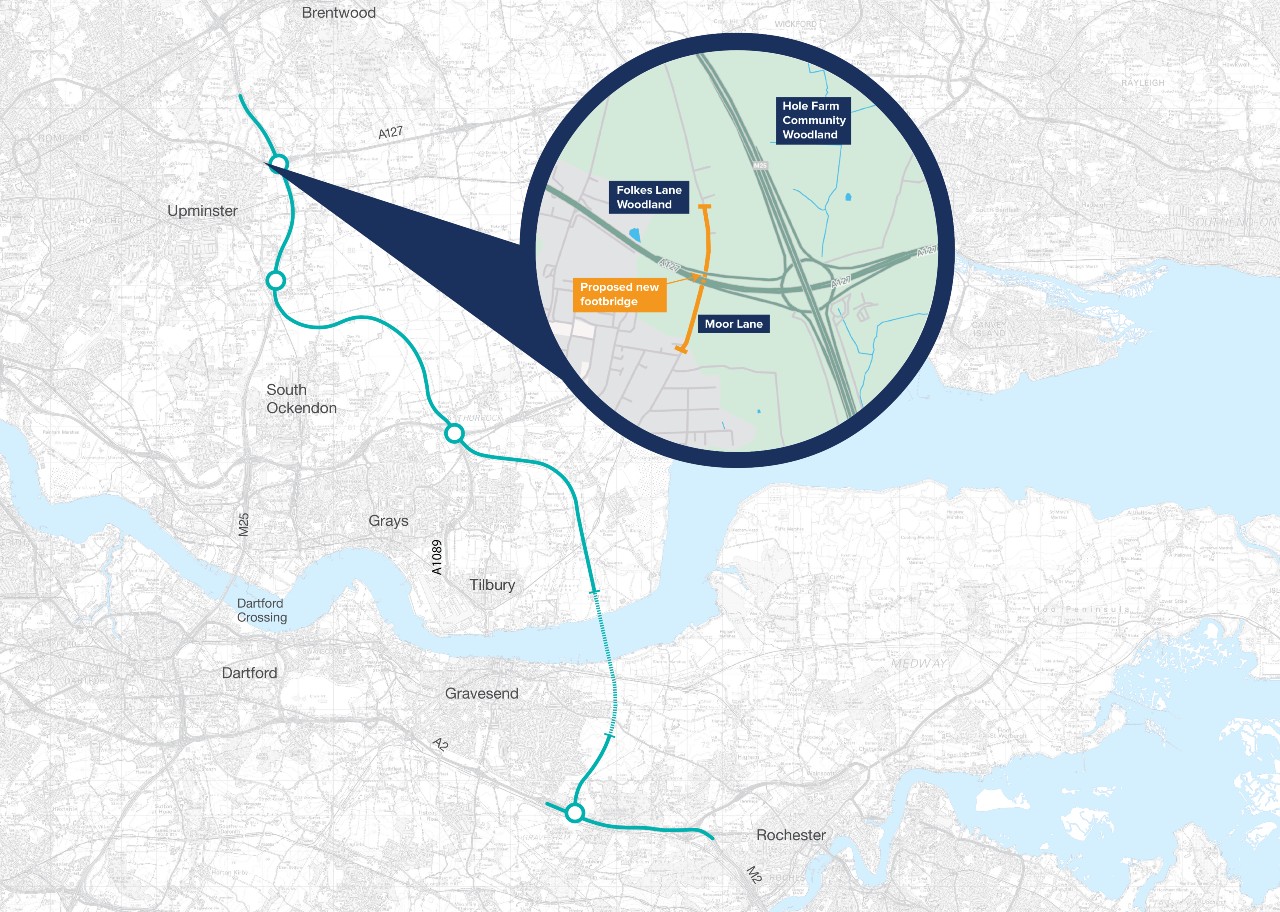Future of the footbridge revealed as winner of innovative low-carbon design contest announced
The winning design from Arup and Seán Harrington Architects has set a new benchmark for sustainable design
Share this article
Published
20 May 2025The Lower Thames Crossing has revealed the winner of its innovative, low-carbon footbridge contest today (19 May 2025). The winning design from Arup and Seán Harrington Architects has set a new benchmark for sustainable design that could be used on the new road and replicated across roads country-wide.
The winning design from Arup and Seán Harrington Architects beat 32 entries who were judged on their proposed use of low-carbon materials and construction methods, and evidence of good design principles to allow ease of access and a pleasant crossing experience. The design eliminated all concrete from the bridge and approach ramps, and integrated planting into the design to promote habitat connectivity.
The Lower Thames Crossing is a new road and tunnel under the Thames that will connect the A2 and M2 in Kent, to the A13 in Essex and M25 in the London Borough of Havering. It will drive economic growth by tackling congestion at the Dartford Crossing and creating a new connection between the ports of the South-East, the Midlands and the North.
In July 2024, the project launched a low-carbon footbridge contest to find a pioneering and sustainable design for a crossing over the A127, at the northern end of the Lower Thames Crossing route. The footbridge would restore the connection between Moor Lane and Folkes Lane, which was severed when the A127 was opened in 1924. It will also offer the local community an uninterrupted route between local green spaces such as Thames Chase Forest Centre, Folkes Lane Wood, and Hole Farm Community Woodland, the new 100-hectare woodland being created in partnership between the Lower Thames Crossing and Forestry England.
The competition is part of the project’s plans to be the greenest road ever built in the UK. As a pathfinder project exploring carbon neutral construction, the project will reduce its own carbon footprint and drive change throughout the UK construction industry by scaling up the use of low-carbon materials and methods. It will create six times more green space than road, and includes one million trees, a community woodland, two new public parks and 40 miles of new and improved pathways for walkers, cyclists and horse riders.

The location of the winning low-carbon footbridge.
Shaun Pidcock, Programme Director, Lower Thames Crossing said: “The Lower Thames Crossing will not only drive economic growth, but it will also redraw the blueprint for modern, sustainable infrastructure. The low-carbon footbridge contest is one example of how we are tackling carbon in construction and helping restore nature. It was incredibly heartening to see the new ideas and creativity from the industry. We had a hard job choosing winner from all the high quality entries, but are delighted with the winning design and look forward to seeing it come to fruition and hope it inspires other designers to aim for low carbon solutions everywhere.”
Martin Hooton, Associate Director at Arup, said: “The contest was successful in advancing high quality design by prioritising low carbon and innovative ideas from across our industry. This focus empowered our team to challenge conventional thinking and to be bold in our approach to delivering lowest carbon across all aspects of this design.”
Seán Harrington, from Seán Harrington Architects, said: “This competition was a wonderful opportunity (and challenge!) for the team to rethink bridge design, by putting low carbon and biodiversity considerations to the forefront of our decision-making. This was synthesised with efficient and creative engineering, careful placemaking and ergonomics to create a design that is sympathetic to its context, and expressing its function with clarity, elegance, and simplicity.”
"This competition was a wonderful opportunity (and challenge!) for the team to rethink bridge design, by putting low carbon and biodiversity considerations to the forefront of our decision-making. This was synthesised with efficient and creative engineering, careful placemaking and ergonomics to create a design that is sympathetic to its context, and expressing its function with clarity, elegance, and simplicity."Seán Harrington, from Seán Harrington Architects
The humble footbridge plays an understated but vital role keeping communities connected, allowing access to green spaces and encouraging active transport. National Highways is responsible for more than 600 footbridges in England, with 176 of them in the South East, and many will need to be maintained or replaced in the coming years.
The design of the Lower Thames Crossing has been shaped and improved by working in partnership with local communities, and in keeping with this approach the competitions judging panel included representatives from the London Borough of Havering – where the bridge will be situated – Transport for London and Balfour Beatty – the Delivery Partner for the Roads North of the Thames contract, as well as National Highways.
The Lower Thames Crossing received planning permission in March 2025 and is now working with the government on funding options. Construction could start as early as 2026, with the new road expected to open in the early 2030s.
Low Carbon Footbridge Design Contest, Summary Report
This report summarises the vision, the requirements and arrangements of the design contest and the design concepts that emerged.
Read moreFor further information contact us at info@lowerthamescrossing.co.uk or by calling 0300 123 5000. You can also get the latest updates on Facebook, Twitter, LinkedIn, Instagram and our YouTube channel.
